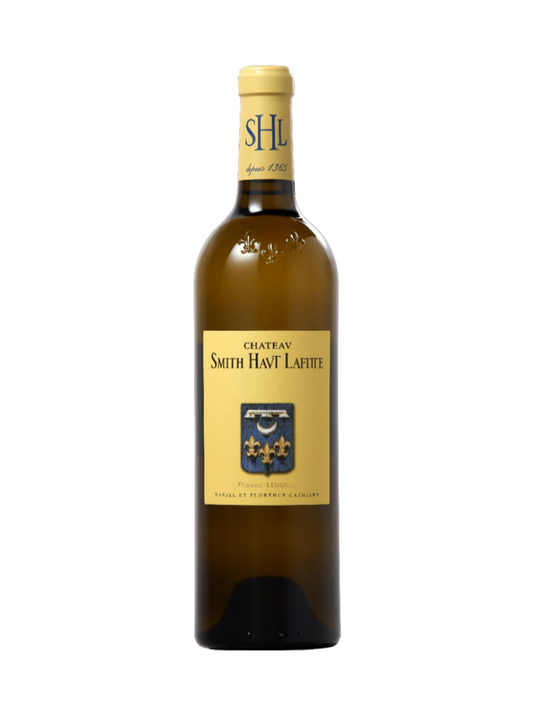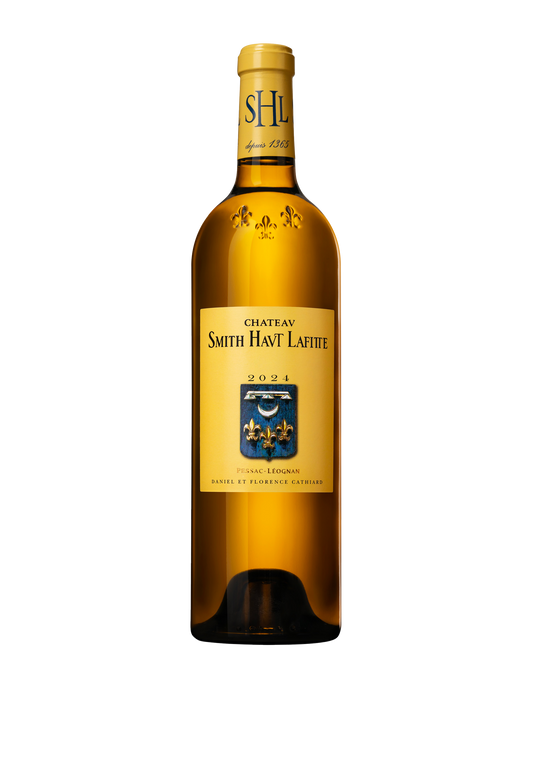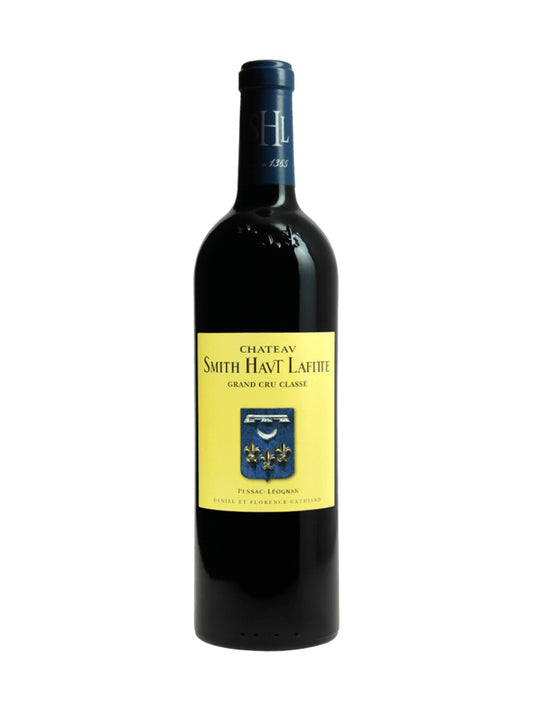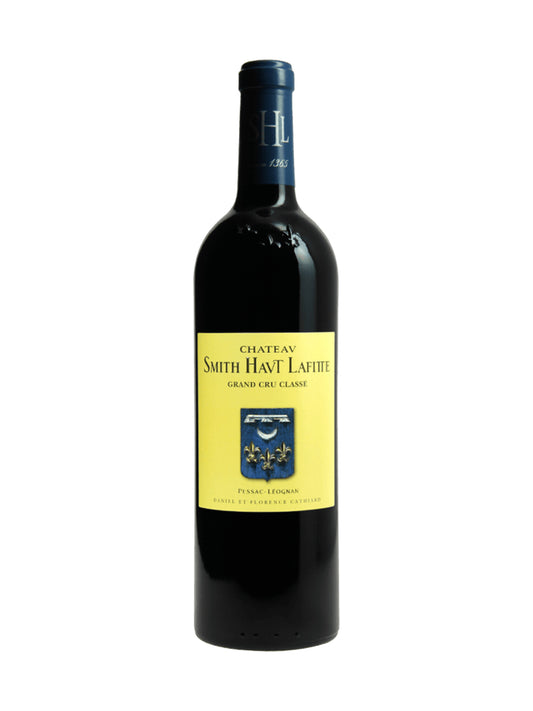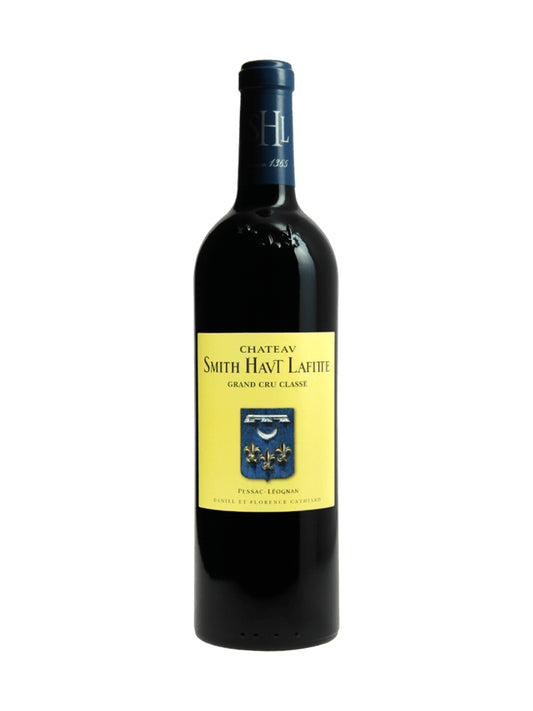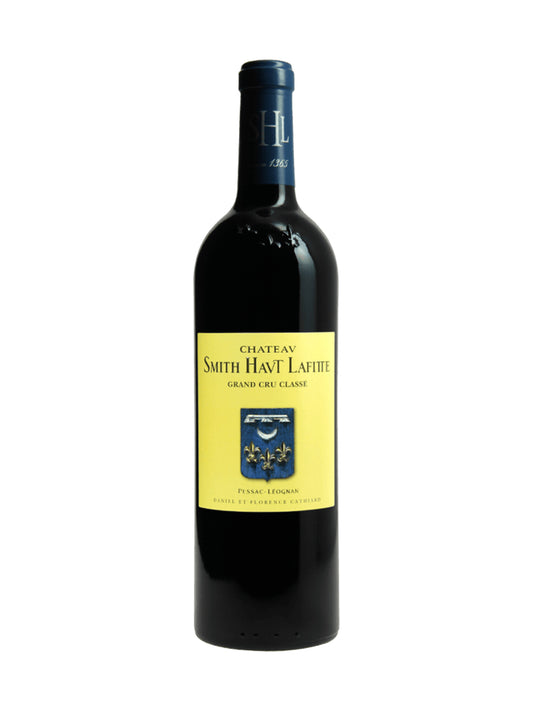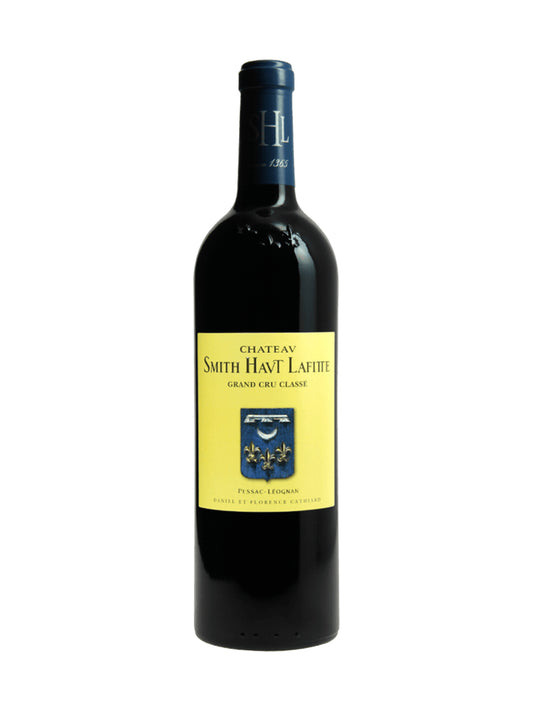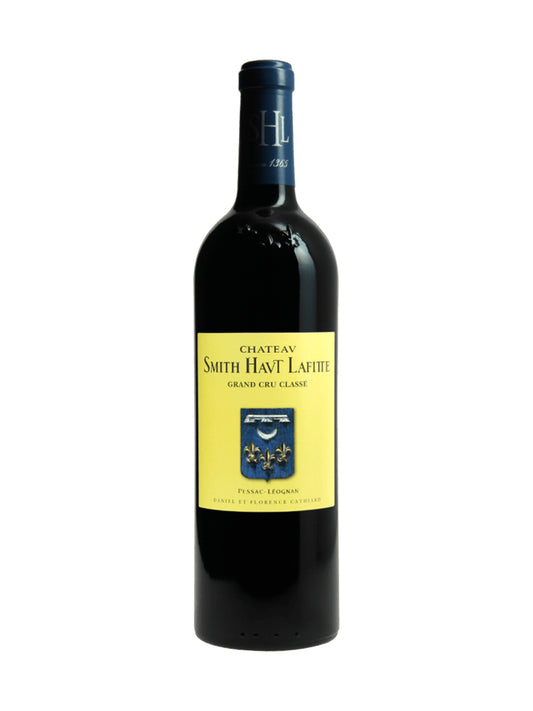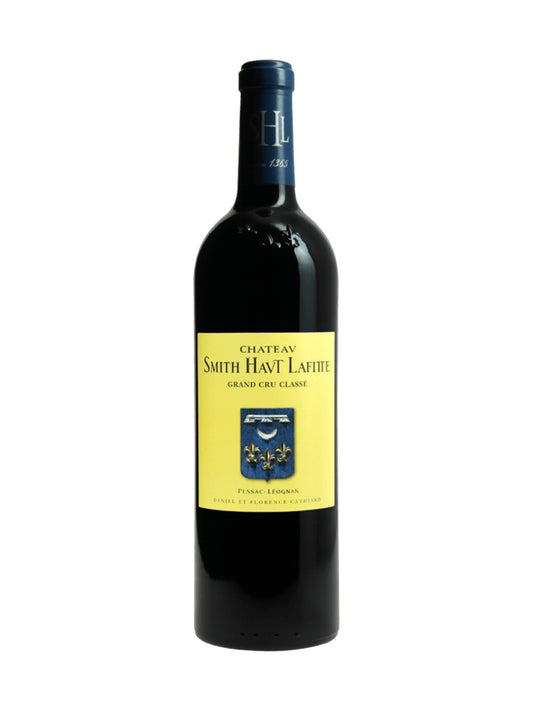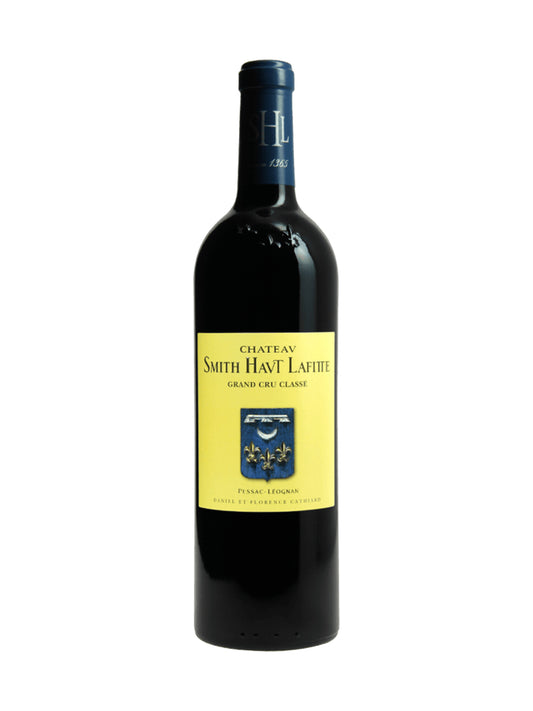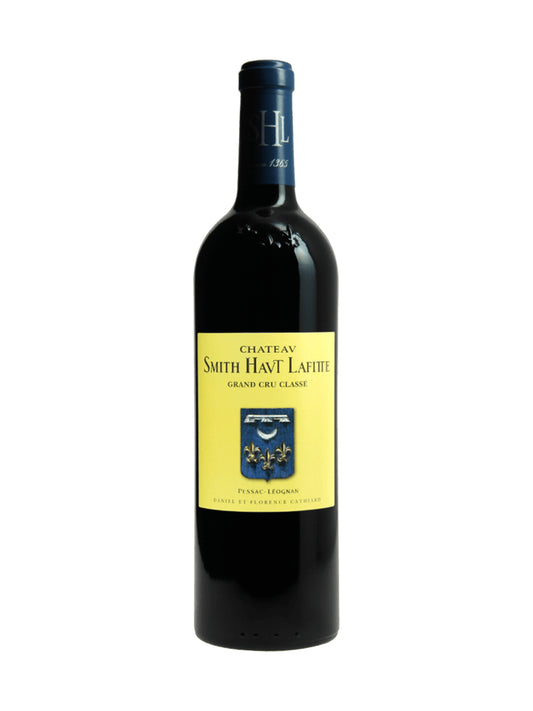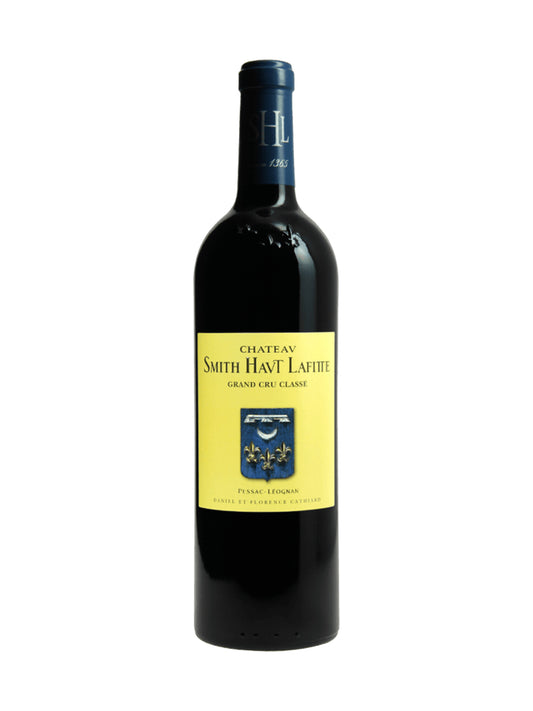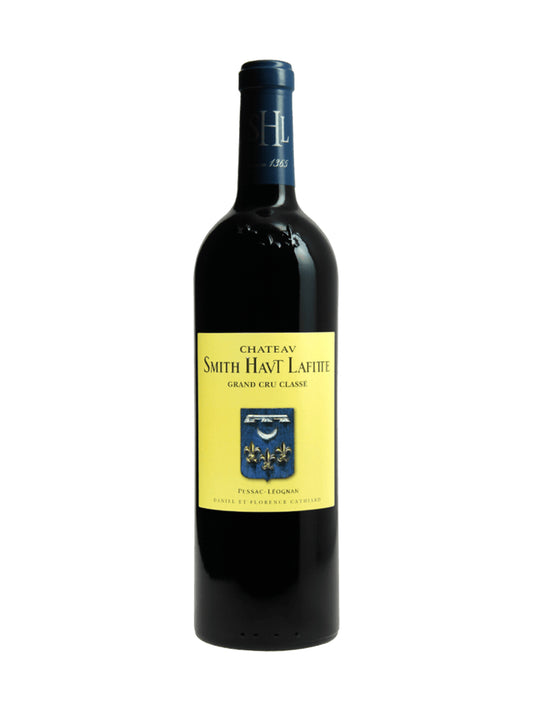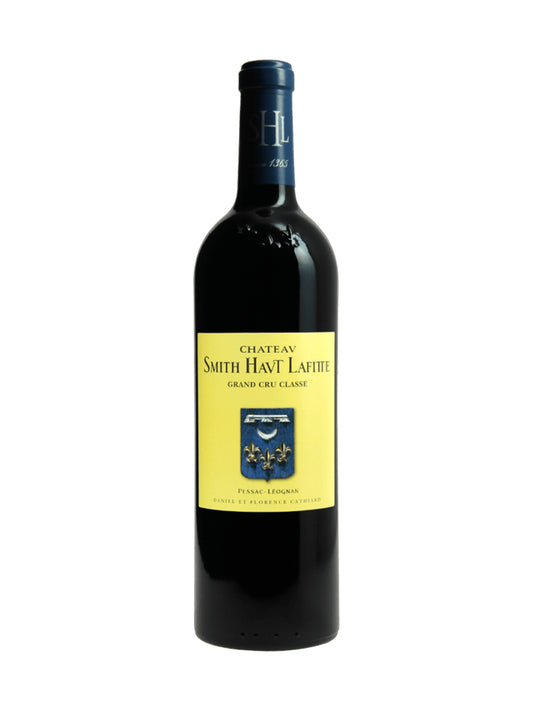CHATEAU SMITH HAUT LAFITTE
Château Smith Haut Lafitte, located in Graves in Pessac-Léognan appellation has been the Cathiard family’s property since 1990. The estate history started 6 centuries ago in 1365 with the noble Bosq family who became owner of some vines and gave the name of “Haut Lafitte”. In the 18th century, a Scottish wine merchant, George Smith, built the chartreuse and named the Château “Smith Haut Lafitte”. The Château’s red wines are classified as Grand Cru. Plus d'information
Découvrez nos millésimes CHATEAU SMITH HAUT LAFITTE
Smith Haut Lafitte, a historic Grand Cru and a leader in biodiversity
The history of Grand Cru Smith Haut Lafitte
Located in the Graves region, the prestigious Chateau Smith Haut Lafitte is nestled in the heart of the Pessac-Léognan appellation.
The history of the estate began over 6...
Découvrez nos millésimes CHATEAU SMITH HAUT LAFITTE
Smith Haut Lafitte, a historic Grand Cru and a leader in biodiversity
The history of Grand Cru Smith Haut Lafitte
Located in the Graves region, the prestigious Chateau Smith Haut Lafitte is nestled in the heart of the Pessac-Léognan appellation.
The history of the estate began over 6 centuries ago, in 1365, when the noble Verrier du Bosq family acquired some vines and gave the name 'Haut Lafitte'. The estate changed ownership in the mid-18th century. The Scottish merchant George Smith bought the estate, named it 'Smith Haut Lafitte' and had the Carthusian monastery built.
In 1842, Lodi Martin Duffour Dubergier, owner of the château and mayor of Bordeaux, decided to elevate the estate to the rank of 'Grand Cru Exceptionnel'.
The era of Maison Louis Eschernauer
After distributing the Chateau's wines since the beginning of the 20th century, Maison Louis Eschernauer, in the hands of the wine merchant 'Uncle Louis', a veritable tycoon in Bordeaux, bought Smith Haut Lafitte in 1958.
A story behind every label
The Chateau Smith Haut Lafitte emblem can be seen on the label of every bottle. It bears witness to the rich history of the estate. It is made up of 3 branches symbolising the 3 children of Georges Smith. A tribute is paid to the founding family of the vineyard, the Verrier du Bosq family, with an illustration of fleurs-de-lis. The centre of the label features a crescent moon, an iconic reference to the port of Bordeaux, 'the port of the moon'.
The incredible destiny of the Cathiard family
Since 1990, the property has been managed by former Olympic skiers Florence & Daniel Cathiard. After their sporting careers, the Cathiards went on to study in the United States and Canada. A few years later, they launched their chain of supermarkets and sports equipment shops. They bought Chateau Smith Haut Lafitte after selling their shops.
Their philosophy is to perpetuate the excellence of the terroir, expressed through rare and iconic wines. They devote their time and energy to their estate. They moved into George Smith's 18th-century Carthusian monastery a few years after the purchase.
The Cathiards' commitment to biodiversity and sustainable development is rooted in their own identity and makes them true ambassadors. Florence Cathiard revealed in an interview that her father would have liked to call her 'Nature'. As skiers, the Cathiards have always been close to nature. As children, they always admired the mountains and the snow. That's why they chose to raise their two daughters on an isolated farm.
The quality of their work was recognised when the Chateau was awarded its first score of 90 points by renowned wine critic Robert Parker in 1995. This was followed by the prestigious nomination in 1998 by the international magazine Wine Spectator as one of the 10 best wines in the world. Then, in 2009, the perfect score of 100 out of 100 points was awarded by Robert Parker.
Chateau Smith Haut Lafitte 2023, a collector's vintage
Chateau Smith Haut Lafitte describes the 2023 vintage as 'a vintage of the future and of memory'. It was a memorable vintage and a real collector's item for any Bordeaux wine lover. This year the Chateau had the immense honour and privilege of hosting His Majesty King Charles III and Queen Camilla during the harvest period. The Chateau had been chosen by the royal family because it promotes values such as biodiversity, commitment to organic farming and sustainable vineyard management practices. King Charles was able to watch a barrel being made in the workshop, the grapes being sorted and taste the 2005 vintage - the year of Camilla's marriage.
The wines of Chateau Smith Haut Lafitte
Chateau Smith Haut Lafitte cultivates 7 grape varieties on its estate and offers six wines, divided into three cuvées available in white and red: the Grand Vin, Chateau Smith Haut Lafitte, complemented by Petit Haut Lafitte and Hauts de Smith.
The Graves estates neighbouring the famous Chateau Haut-Brion often make white wine from Sauvignon Blanc and Semillon.
Petit Haut Lafitte and Hauts de Smith are no different. From the berries to the winery, all the batches have been treated with the same care and the same techniques. During the blending process, not all the batches are selected to form part of the Grand Vin. These cuvées benefit from an ecological 'stealth' cellar equipped with solar panels. The cellar is underground and requires no cooling system.
The most 'perfect' vintages, awarded 100 out of 100 points by wine journalists and critics, are 2009 for Chateau Smith Haut Lafitte red and 2020 for Chateau Smith Haut Lafitte white.
A unique living terroir
Chateau Smith Haut Lafitte has 80 hectares of vineyards in a single block. It is looked after by the owners on one side and by the Technical Director on the other, all living in close proximity and in symbiosis with the rhythm of the vineyard so as to be able to intervene in the event of unforeseen circumstances or meteorological emergencies.
The vineyard's unique terroir is made up of semi-precious stones and pebbles deposited by the Garonne River millions of years ago. Nicknamed the 'Graves of the Graves', the Chateau's hills and Gunzian Graves provide the vines with natural drainage and a source of warmth. These two properties are very advantageous for the estate, as Bordeaux is a very rainy wine-growing region with a preponderance of clouds throughout the year.
Smith Haut Lafitte, ambassador for biodiversity
Since the estate was founded, the Chateau has followed a philosophy known as 'bio-precision'. This approach is based on the principles of organic and bio-dynamic agriculture, as well as the use of new technologies (drone, precise images). Smith Haut Lafitte has been certified organic since 2019. The estate is testing new approaches, such as planting free-standing vines, composting with the help of the animals on the estate and using vine shoots, and installing a connected weather station to make more accurate decisions. Their approach is no longer based on parcels of land, but on even smaller plots of vines.
Their environmentally-friendly approach is part of an overall approach to managing the estate. Rainwater - over 950 mm on average in Bordeaux - is carefully collected and recycled on the estate. To encourage biodiversity, 8.5 km of hedges have been planted, orchards and vegetable gardens are cultivated, bees are kept and phyto-therapy is used to cure plants with natural extracts. As well as bees, llamas, highland cows and horses are present on the estate. Morgane, the driver, looks after 2 draught horses nicknamed Inédit and Jeanbar, which regularly pass through the vineyards. The two Highland cows, Perfect and Vino, work to preserve the old oak forests by eating ivy, a parasitic foliage. Medicinal plant remedies are produced using their own crops of horsetail, tansy, yarrow, yarrow, etc., which are sprayed as the horses pass through the vineyards. Trees have recently been planted in the middle of the vine rows.
The grape seeds are recovered and used in cosmetics under the Caudalie brand, founded by Alice, one of the Cathiard daughters.
The Cathiard family also own a small river island in the Garonne, where they can grow their own rootstocks and unique grape varieties.
The estate is part of the worldwide 1% for the Planet association. Members donate 1% of their sales to environmental causes.
Smith Haut Lafitte, precision winemaking and ageing
The winemaking process is precise and rigorous, to produce elegant, fine wines.
Each harvest is carried out by hand. Once they have been collected and taken to the winery, the bunches are sorted again using a vibrating table and optical sorting. They are then transferred by gravity to truncated-cone-shaped wooden vats for fermentation.
Each fermentation vat has an innovative system that captures the CO2 produced during fermentation and converts it into sodium bicarbonate.
The underground cellar is home to over a thousand barrels used to mature red and white wines. On average, the wines are aged in barrels for 12 to 18 months.
Smith Haut Lafitte's unique barrels
Wood influences the colour, aroma and flavour profile of a wine, as well as its ageing potential. It plays a very important role. A white wine often has a deeper yellow colour than a wine that has not been aged in wood. The wood in the barrel creates a micro-oxygenation that does not occur naturally in steel vats. The aromas coming from the barrel can be vanilla, coffee, smoke, wood, toast, barbecue ash, etc. And on the palate, a wine can show a different texture, particularly through the tannins, which are more or less pronounced. The tannins in the barrel are one of the elements that allow the wine to become more sublime over the years.
Oak is selected according to the fineness of its grain, its terroir and its origin. Smith Haut Lafitte favours sourcing French oak from the finest forests.
In 1993, Daniel Cathiard decided to add a barrel-making workshop to the estate. Today, master cooper Jean-Luc makes 3 to 4 barrels a day. The barrel is an essential element in the composition of a Grand Vin. The type of wood used, the level and length of toasting, and the art of assembling the staves all involve a rare know-how whose expertise is an important part of the identity of the wines. The preservation of this rare craft has been recognised by the 'Living Heritage Companies' label. The cooperage is open to visitors to promote this traditional Bordeaux know-how.

